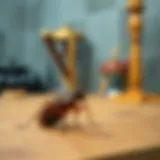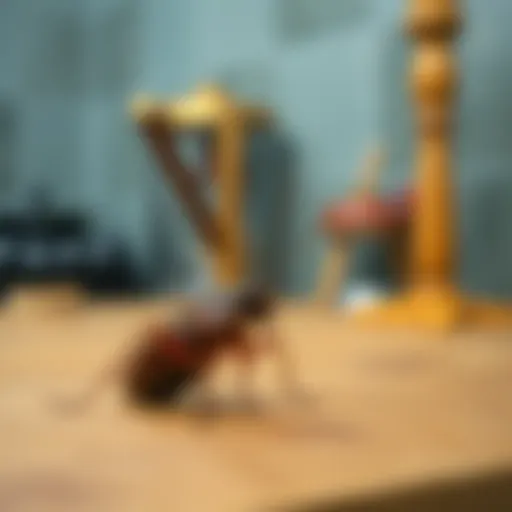Understanding Bed Bug Appearance: Identification Guide
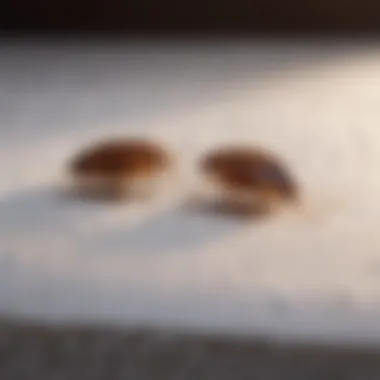

Intro
Bed bugs are more than just an inconvenience; their presence can lead to significant distress and health concerns. Understanding their appearance is the first step in effective prevention and control. In this part, we will focus on essential aspects of bed bugs, including their physical characteristics and behavior. Recognizing these details can help individuals identify bed bugs quickly and take necessary action.
Animal Overview
Common Name and Scientific Classification
Bed bugs, scientifically known as Cimex lectularius, are small insects that belong to the Cimicidae family. They are typically nocturnal and prefer to hide during the day, making them challenging to detect. Their common name, bed bug, stems from their preference for resting in bedding or furniture close to sleeping humans.
Physical Characteristics
Adult bed bugs are easily identifiable due to their distinct features:
- Size: They typically measure about 4 to 5 mm in length, roughly the size of an apple seed.
- Color: Their bodies are reddish-brown when fed and a lighter tan when unfed.
- Shape: Bed bugs have a flat, oval shape which makes it easier for them to hide in tiny crevices.
- Antennae: They possess long antennae, which they use to sense their environment.
- Eyes: Bed bugs have small, beady eyes that can be challenging to see without close examination.
In their various life stages, bed bugs can vary slightly in appearance:
- Nymphs: Younger bed bugs are smaller, lighter in color, and an important indicator of an infestation.
- Eggs: Bed bug eggs are tiny, white, and about 1 mm in size, often found in clusters.
Habitat and Distribution
Bed bugs are cosmopolitan pests, found in homes, hotels, and even public transportation. Their habitats generally include:
- Bedding: They thrive in mattress seams and under sheets.
- Furniture: Couches and chairs offer harborages for them.
- Cracks and crevices: These insects can fit into the smallest of spaces, including wall sockets.
Bed bugs are found globally, favoring areas where people sleep, which is crucial for their survival.
Behavior and Social Structure
Communication Methods
Bed bugs communicate mainly through pheromones, chemical signals that convey information about their presence and reproductive status. These methods are subtle yet effective for maintaining social interactions within colonies.
Social Hierarchies
Bed bugs do not exhibit complex social structures like some insects. Instead, they share common areas for feeding and breeding. Competition for resources is typically minimal due to their nocturnal habits.
Mating and Reproductive Behavior
Bed bugs engage in a unique mating process known as
Preface to Bed Bugs
Bed bugs are small, parasitic insects that often go unnoticed until they have established a significant infestation. Their ability to hide in tiny crevices and their nocturnal feeding habits make them hard to detect. Understanding these insects is essential for anyone seeking to maintain a pest-free environment. This section aims to clarify the nature of bed bugs and emphasize the importance of identification for effective pest control.
Defining Bed Bugs
Bed bugs, scientifically known as Cimex lectularius, are hematophagous insects that thrive on human blood. Adult bed bugs can grow up to 5-7 mm in length, featuring a flattened oval shape that allows them to easily hide during the day. They possess a pair of antennae and a segmented body. Their life cycle consists of three stages: egg, nymph, and adult, with each stage presenting unique challenges for identification and management.
In addition, their mouthparts are adapted for piercing skin and drawing blood, a process that typically occurs at night when their hosts are asleep. Understanding the defining traits of bed bugs is crucial for distinguishing them from other pests, which can resemble them in appearance.
Importance of Identification
Identifying bed bugs accurately is essential for several reasons. First, correct identification enables timely intervention. Bed bugs multiply quickly; a female can lay hundreds of eggs in her lifetime. The sooner an infestation is detected, the easier it may be to control it.
Second, misidentification can lead to ineffective treatments. For instance, if a homeowner mistakes a bed bug for a flea, they may apply inappropriate pesticides. This not only wastes time and resources but can also exacerbate the problem.
Moreover, understanding what bed bugs look like allows individuals to protect themselves effectively. This includes knowing where to look for signs of these pests, such as fecal stains, shed skins, and bites.
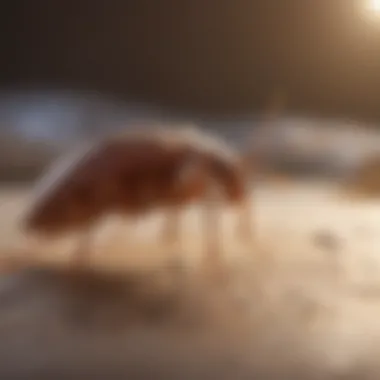

Accurate identification is pivotal for effective pest management strategies. Misidentifying bed bugs can lead to prolonged infestations and unnecessary treatments.
Finally, educating the public on these insects aids in reducing stigma. Many people associate bed bugs with poor hygiene. However, anyone can encounter them, regardless of their living conditions.
Physical Characteristics
Understanding the physical characteristics of bed bugs is essential for proper identification and management of these pests. Knowing what they look like can make a significant difference in preventing infestations and ensuring a timely response. Physical traits play a key role in differentiating bed bugs from other similar insects, thus allowing for accurate identification that can eliminate confusion and misdiagnosis.
Size and Shape
Bed bugs possess a distinct body shape that is oval and flattened, providing them with an advantage when hiding in crevices. Adult bed bugs typically measure about 4 to 5 millimeters in length. The size can help determine whether an insect is indeed a bed bug or another pest. Their shape allows them to easily conceal themselves in small spaces, making them particularly challenging to detect.
Color and Texture
The coloration of bed bugs is usually a rusty brown to reddish-brown, which may change slightly after they feed. Their texture is smooth, and they have a glossy appearance, especially after a blood meal. This glossiness can create challenges in recognizing them right away, further enhancing their ability to blend with their environment. Understanding color and texture is key to quickly identifying bed bugs before they can multiply and spread.
Body Structure
Bed bugs are composed of three main parts: the head, thorax, and abdomen, each fulfilling essential roles in their survival and behavior.
Head
The head of a bed bug is small but integral to its feeding process. It includes very sharp mouthparts that allow the insect to pierce the skin and draw blood. This structured design is effective for their parasitic lifestyle, ensuring that they can feed efficiently on hosts.
Key characteristics of the head include:
- Mouthparts: Adapted for piercing and sucking, enabling effective feeding.
- Antennae: These are short and segmented, aiding in sensation and navigation.
Understanding the head’s features can enhance the identification process, helping individuals recognize bed bugs when they are encountered.
Thorax
The thorax of a bed bug connects the head to the abdomen and consists of three segments. It plays a crucial role in movement, as it houses the legs that allow the bed bug to move quickly in search of hosts or hiding spots. The thorax is not as wide as the abdomen, making the bed bug easier to identify.
Important aspects of the thorax include:
- Legs: Well-developed and strong, allowing for quick movement.
- Prothorax: Notable as it covers part of the head, contributing to their overall appearance.
Focusing on the thorax helps clarify the distinctions between bed bugs and other insects in similar environments.
Abdomen
The abdomen is the most significant part of a bed bug’s body, where most of the digestive and reproductive organs are located. Its size can increase substantially after a feeding, which is a distinctive feature utilized in identification.
Key elements of the abdomen are:
- Segmented Body: Allowing expansion after feeding and making them appear bloated.
- Rounded Shape: Contributes to their characteristic flattened appearance when not engorged.
Recognizing the abdomen’s attributes can effectively assist individuals in identifying whether they are facing a bed bug or a different pest.
Understanding these physical characteristics will aid families, pest control professionals, and health officials in recognizing, managing, and preventing bed bug infestations effectively. Identifying and responding to bed bugs depends heavily on the knowledge of their appearance.
Life Stages of Bed Bugs
Understanding the life stages of bed bugs is essential for effective identification and management. Knowing how bed bugs evolve from eggs to adults can help in recognizing early signs of an infestation. Identifying these stages may also assist in targeting specific control measures effectively. Each life stage presents different characteristics and behaviors, which can inform the most suitable methods for prevention and treatment.
Eggs
Bed bug eggs are small, about 1mm in size, and they appear as tiny white or pearly ovals. Their size and color can make them easily overlooked, yet their detection is crucial. Female bed bugs can lay several eggs in a single day, often in hidden areas. These eggs hatch in about one to two weeks, making early detection essential in minimizing an infestation. Checking for them in crevices, seams of mattresses, and behind furniture is vital.
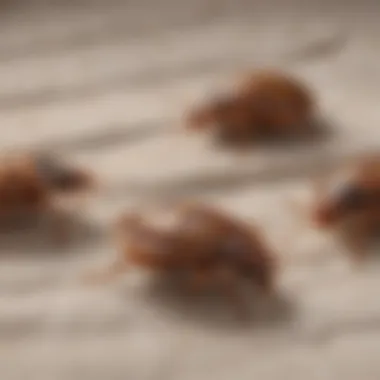

Nymphs
Nymphs are the immature stages of bed bugs. They go through several molts before reaching adulthood. Each nymph stage has distinct appearances and size variations.
Appearance at Different Stages
Nymphs evolve through five stages, with each stage characterized by a progressive increase in size and a shift in coloration. Initially, the first-stage nymph is nearly transparent and very small. As nymphs molt and mature, they become larger and begin to take on a more reddish-brown color. Recognizing these changes is vital for accurate identification.
- First-stage nymphs: 1.5mm, almost transparent.
- Second-stage nymphs: 2mm, pale yellowish.
- Third-stage nymphs: 3mm, light brown.
- Fourth-stage nymphs: 4mm, getting darker.
- Fifth-stage nymphs: 5mm, resembling adults.
This growing size and change in color help in determining the level of infestation within a living space.
Size Comparison with Adults
Adult bed bugs typically measure around 4-5mm, which helps in visual contrast between nymphs and full-grown insects. The difference in size is quite noticeable once one is familiar with the stages.
- Adult bed bugs: 4-5mm, oval-shaped and flattened, usually dark reddish-brown.
- Fifth-stage nymphs: 5mm, closer to adults in size but less pronounced features.
Understanding this size comparison is beneficial for determining the progression of an infestation. When nymphs are observed, it indicates that an adult population is already present, thus necessitating prompt action.
Adult Bed Bugs
Adult bed bugs are the most recognizable stage due to their distinct features. They are oval, flat, and typically brown to reddish-brown in color. Adults can measure up to 5-7mm in length. Their size allows homeowners and pest controllers to identify them more easily. Notably, adults are capable of traveling distances and can survive without a meal for several months. This adaptability enhances their ability to infest new areas. Regular inspections and understanding their appearance can aid significantly in controlling further spread.
Behavioral Traits and Movement
Understanding the behavioral traits and movement of bed bugs is vital for effective identification and control. Their habits often dictate the locations they frequent, shaping not just their appearance but also how they interact within their environment. Recognizing these traits can greatly assist in pinpointing infestations and taking suitable action. Awareness of behavior can help families, pest control professionals, and biologists devise strategies to limit contact with these pests.
Feeding Habits
Bed bugs have a distinct feeding pattern that involves puncturing the skin of their hosts to obtain blood. This usually occurs during nighttime hours, as bed bugs prefer to feed when their hosts are least active. Their feeding habits include:
- Time of Day: Feeding predominantly happens at night. Bed bugs tend to be nocturnal.
- Feeding Duration: They can feed for three to ten minutes, depending on their saturation level. Once they are done, they will return to their hiding place.
- Feeding Frequency: Adult bed bugs require feeding every five to ten days. Nymphs, however, may need more frequent feeding as they develop into adults.
- Blood Preference: They have an affinity for human blood but will feed on other warm-blooded animals if necessary. This adaptability is part of their survival strategy.
Bed bugs use a specialized mouthpart to pierce the skin. This allows them to withdraw blood without alerting the host. Their saliva contains anticoagulants, which prevent blood from clotting during the feeding process. This aspect might make bites less noticeable initially.
Hiding Places
Identifying where bed bugs hide is essential for prevention and eradication. These pests are excellent at finding concealed spots, and their choice of hiding places is closely linked to their behavioral patterns. Key hiding spots include:
- Bed Frames and Mattresses: Cracks and crevices are prime locations for bed bugs. Inspecting seams, folds, and tags on mattresses and box springs is crucial.
- Furniture: Bed bugs can reside in furniture joints, cushions, or other resting spots within a room. Sofas and chairs are often overlooked during inspections.
- Baseboards and Wall Cracks: They tend to hide in areas where they can access both the floor and walls, especially if there are gaps or cracks.
- Luggage and Clothes: When traveling, bed bugs can easily hitch a ride in bags and clothing. It is wise to inspect these items before bringing them home.
- Electrical Outlets: Unusual hiding places such as outlets can also be a concern. Bed bugs are known to traverse wires and can hide in this confined space.
In essence, bed bugs seek out places that are dark, sheltered, and close to their food sources. Regular checks and preventive measures in these areas can minimize the risk of infestation.
Key Point: Awareness of bed bug behavior aids in early detection and effective control strategies, improving overall prevention efforts among families and pest control services.
Similar Insects and Misidentifications
Identifying bed bugs is essential to prevent infestations. Misidentifying them can lead to ineffective treatments and unnecessary expenses. Understanding the appearance of similar insects can facilitate a correct identification process. Distinguishing bed bugs from other pests is crucial for maintaining a pest-free environment, especially in homes and businesses. Each insect has specific traits that vary from bed bugs, providing important clues during identification.
Fleas
Fleas are small, wingless insects that primarily feed on the blood of animals, particularly pets like dogs and cats. They are usually dark brown, and their bodies are laterally compressed, which aids in moving through fur. A key aspect to consider is that fleas can jump up to 200 times their body length, making them agile. Unlike bed bugs, fleas have a more elongated structure and are often smaller, measuring about 1-3 mm.
Fleas may cause irritation due to their bites, leading to scratching and discomfort in pets. Their bites can also present a red, itchy rash in humans. One critical difference is that fleas do not remain attached to their host for extended periods. Instead, they jump on and off, while bed bugs tend to linger, hiding in cracks and crevices. Recognizing these differences is important for proper pest control strategies.
Ticks
Ticks are arachnids, not insects, and can be commonly found in grassy or wooded areas. They have a flat, oval shape and can range from 1-10 mm, depending on their life stage. Ticks have a different color, often brown or reddish, and lack the distinct flattened appearance of bed bugs. They attach themselves to their host quite firmly, feeding on blood for several days. This attachment makes their behavior considerably different from that of bed bugs, which bite and retreat.
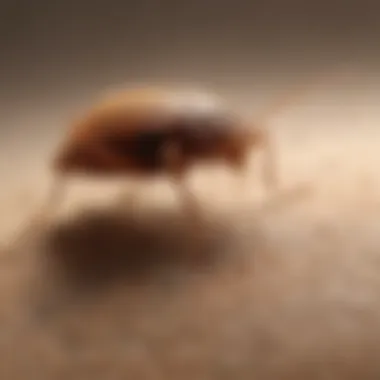

Unlike bed bugs that prefer to hide indoors, ticks are usually outdoor pests. A distinguishing feature of ticks includes their ability to swell significantly after feeding. They are also known carriers of various diseases, which makes it important to differentiate them from bed bugs. Careful observation of their physical traits can help in correctly identifying the pest.
Carpet Beetles
Carpet beetles are another pest often mistaken for bed bugs. Their bodies are oval and marked with various patterns, often featuring a mix of black, brown, and yellow. Unlike the uniform coloration of bed bugs, carpet beetles have a hard shell and might appear more like small, colorful beetles. Adult carpet beetles are about 2-5 mm in size, making them slightly smaller than adult bed bugs.
Carpet beetles do not feed on blood but rather on organic materials such as fabric and fur. They can cause damage to clothing and upholstery, which adds to the confusion. Observations of their behavior also differ; while bed bugs are nocturnal and prefer to remain hidden, carpet beetles are often found flying around lights or doors during the day. Learning to recognize the unique features and behaviors of carpet beetles is vital to prevent potential misidentifications.
Key Point: Correctly identifying pests allows for targeted interventions and effective pest management strategies, which contribute to healthier living environments.
Common Misconceptions
Understanding common misconceptions surrounding bed bugs is essential for accurate identification and effective control strategies. Misunderstandings can lead to ineffective pest management interventions and reinforce unfounded fears. By addressing these misconceptions, individuals can prioritize appropriate measures to mitigate bed bug issues and protect their living spaces.
Size Perception
A prevalent misconception is the perception of bed bug size. Many people assume bed bugs are larger than they actually are. Adult bed bugs usually measure between 4 to 5 mm in length, roughly equivalent to the size of an apple seed. This size can be off-putting and may lead individuals to underestimate or misidentify them based on their size alone. This misperception can result in a lack of early detection, which is crucial in preventing infestations.
Furthermore, it is important to recognize that the size of bed bugs changes throughout their life stages. The eggs are nearly invisible, measuring about 1 mm. Nymphs, the young stages of bed bugs, can range in size as they grow, starting from 1.5 mm to 4 mm. The variance in size across different life stages often causes confusion during identification, making educational awareness critical in combating infestation effectively.
Color Variations
Another misconception relates to the color of bed bugs. Many believe that bed bugs are only brown in color; however, this is not entirely accurate. Although adult bed bugs typically have a reddish-brown hue due to their blood meals, several factors can influence their color. Unfed bed bugs appear lighter, resembling a tan or light brown canvas while a fed bed bug takes on a more pronounced reddish tone.
Lighting and the surface they are on can also affect color perception. For instance, a bed bug on a dark fabric may appear darker than it truly is. Misinterpretations based on color can lead to confusion with similar insects, such as carpet beetles. Therefore, it is essential to be aware of these variations when attempting to identify bed bugs.
Understanding these common misconceptions about bed bug size and color can facilitate quicker identification, essential for effective pest control measures.
Preventative Measures
Preventative measures are a key aspect in the management of bed bugs. Effective strategies focus on minimizing the risk of infestation. By taking proactive steps, individuals can safeguard their living spaces against these pests. Awareness and early action are essential. Bed bugs thrive in various environments, making it essential to adopt a multi-faceted approach to prevention.
Early Detection
Early detection plays a crucial role in managing bed bug populations. Recognizing the signs of an infestation can significantly reduce the time and cost associated with treatment. Inspecting your living space regularly is fundamental. Look for physical evidence such as small, dark spots on bedding, shed skins, and even the insects themselves.
To aid your examination, consider these key points:
- Regular Inspection: Check mattresses, box springs, and upholstered furniture. These areas are common hiding spots for bed bugs.
- Use of Tools: A flashlight can help you see into dark areas, while a magnifying glass may reveal smaller details.
- Smell: A sweet, musty odor may indicate a larger infestation, prompting further investigation.
Being informed about the appearance of bed bugs allows for quicker identification. That is essential for effective management before they can multiply and cause a full-blown infestation.
Professional Assistance
Seeking professional assistance is often necessary to address significant infestations. Pest control experts have specialized knowledge and tools that can effectively eradicate bed bugs. Trained pest control professionals can evaluate the severity of the infestation.
When considering professional help, keep these factors in mind:
- Assessment: Professionals can conduct a thorough inspection, discovering hidden bed bug populations.
- Treatment Options: They provide targeted solutions tailored to your specific situation, ensuring a more efficient eradication process.
- Follow-up Services: After initial treatment, professionals often provide follow-up services to ensure that any remaining eggs or bugs are effectively dealt with.
Relying on expertise can give peace of mind. It is an investment in the safety and cleanliness of your home.
Proper management of bed bugs involves a combination of early detection, awareness of their hiding spots, and professional assistance when necessary.
Understanding these preventative measures contributes significantly to maintaining a bed bug-free environment.
Finale
Recap of Key Points
- Bed bugs are small, parasitic insects that thrive in various environments, often going unnoticed.
- Recognizing their physical characteristics, including size, color, and body structure, is essential for accurate identification.
- Awareness of distinct life stages, from eggs to adults, provides insights into their development and helps in implementing control measures.
- Misidentifying bed bugs can lead to unneeded anxiety and ineffective treatments. Clearly distinguishing them from similar insects is critical.
- Preventative measures, including early detection and seeking professional help, can greatly reduce the risk of infestations.
Final Thoughts
In summary, a comprehensive grasp of how bed bugs appear is vital for anyone concerned about potential infestations. This knowledge fosters a proactive approach to pest management. Prompt identification leads to swift action, reducing health risks and maintaining comfort at home. Staying informed and vigilant contributes to the overall well-being of individuals and families, transforming a daunting situation into a manageable one. The insights shared here encourage continuous learning and adaptation in the face of these pervasive pests.
